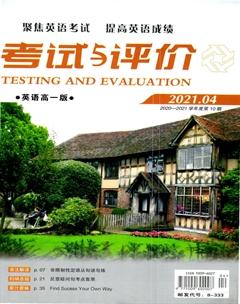Explore Chinese Kungfu
鲁春燕
What springs to mind when you think of kungfu, also known as wushu? Maybe the image of Shaolin monks striking fierce poses with a stern look in their eyes, or popular childrens movies like Kungfu Panda. But do they really portray the meaning of kungfu?
Recently, Laurence J. Brahm, a documentary filmmaker from the United States, explored this question in Searching for Kungfu. In the movie, Brahm embarked on a kungfu poilgrimage, traveling to cities in China and the US in search of the origin and value of kungfu.
Brahm himself is a kungfu lover who has been devoted to the practice for more than 40 years. For him, pursuing this craft was more than a pastime.
Around a decade ago, Brahm was unable to use one of his legs for about two years and had to walk with crutches and a cane. But by practicing martial arts “very, very slowly” he was able to recover step by step. Now, kungfu has become a daily routine for him and also the way he greets the day.
“Martial arts can help us connect our body, connect our neural system, connect our blood flow, can also help connect us into our environment to increase our awareness. Martial arts is moving meditation,” Brahm said.
Still others find additioanl meaning in the practice.
“Chinese kungfu is full of Chinese philosophies and core values,” Hong Kong actor Bruce Leung told Xinhua.
Nonviolence is one of these values, whch is shown both in the name and the practice. Wu, consitsts of two characters—ge, meaning “dagger-ax”, and zhi, meaning “to stop”. So, the meaning of kungfu in Chinese is the art of stopping fighting, the art of nonviolence. Kungfu artists always salute with baoquan. This lets each person know that there are no hidden weapons and shows trust.
Brahms appreciation of kungfu is clear. He sees it as “a mirror of Chinese culture”.
“The traditional values of kungfu, actually, are in the minds of all Chinese people. Why does China want to be in harmony with other nations? Its part of the psychology of the Chinese people. Its also national psychlogy,” Brahm told Xinhua.
Brahm also believes that todays world urgently needs to restart equal exchanges between countries without stereotypes, and that culture and sports, such as kungfu, can serve as a great channel and platform.
想到功夫(武術),你会想到什么?也许是少林僧人目光炯炯的一招亮相;也许是像《功夫熊猫》这样深受孩子们喜爱的电影。但这些真地体现了功夫的真谛吗?
今日,美国纪录片制作人龙安志在《寻找功夫》中探讨了这一问题。在电影中,龙安志踏上功夫朝圣之旅,走访中美城市,寻找功夫的起源与价值观。
龙安志是个功夫爱好者,潜心修习功夫40多年。对他来说,这不仅仅是一种消遣。
大约10年前,有两年左右的时间里,龙安志的一条腿都不能动,他不得不拄拐走路。但通过“非常非常缓慢地”练习武术,他逐步恢复。现在,功夫已经成为他日常生活的一部分,也是他迎接新一天的方式。
“武术可以帮助我们连接身体,连接神经系统,连接血流,还可以将我们连接到环境中来提高我们的意识。武术正在推动冥想。”龙安志表示。
还有些人在习武中发现了其他真谛。
“中国功夫充满了中国哲学和核心价值观。”中国香港演员梁小龙在接受新华社采访时表示。
非暴力就是其中之一,体现在武术的名字和习武过程中。“武”由两个字组成——一个是戈,指“匕首”;另一个是止,指“停止”。因此,功夫在中文里指停止(止)战斗(戈),一种非暴力的行为艺术。习武者总行抱拳礼,这是在告诉每个人,没有藏武器,显现信任。
龙安志对功夫的欣赏不言而喻。他将功夫看成“中国文化的一面镜子”。
“实际上,功夫的传统价值观在所有中国人心中。为什么中国要与其他国家和睦相处?这是中国人心理的一部分。这也是民族心理。”龙安志在接受新华社采访时表示。
龙安志还认为,当今世界迫切需要恢复国家之间没有刻板印象的平等交流,文化和体育,例如功夫,可以作为一个很好的渠道和平台。

